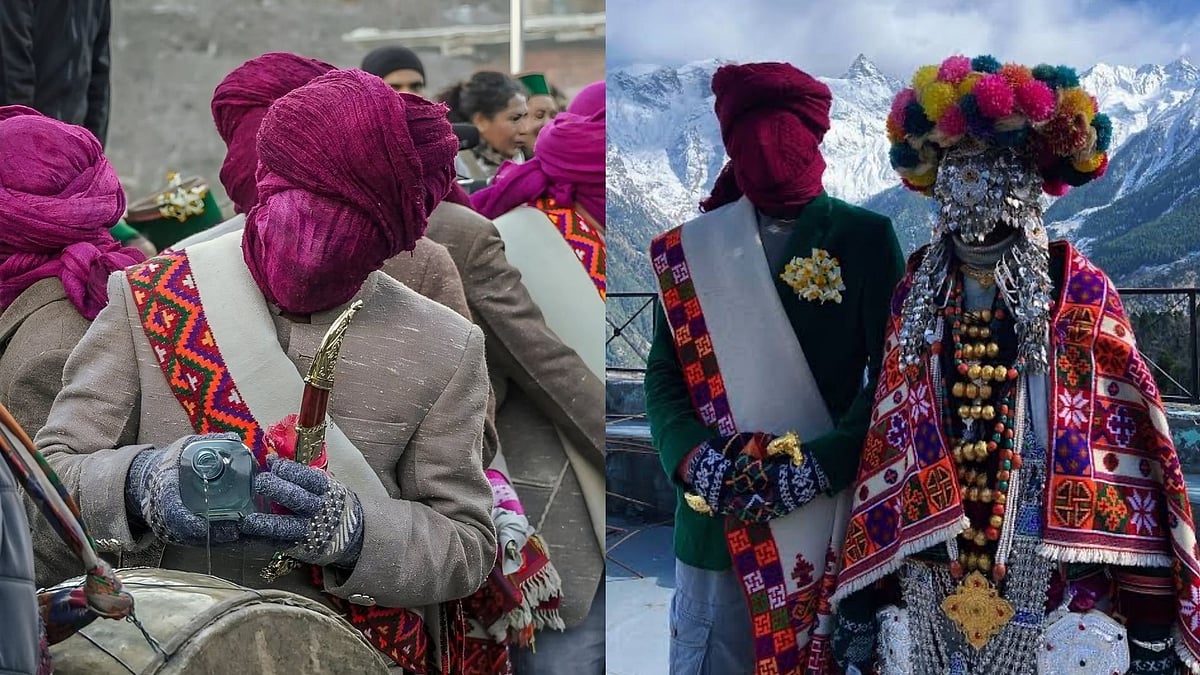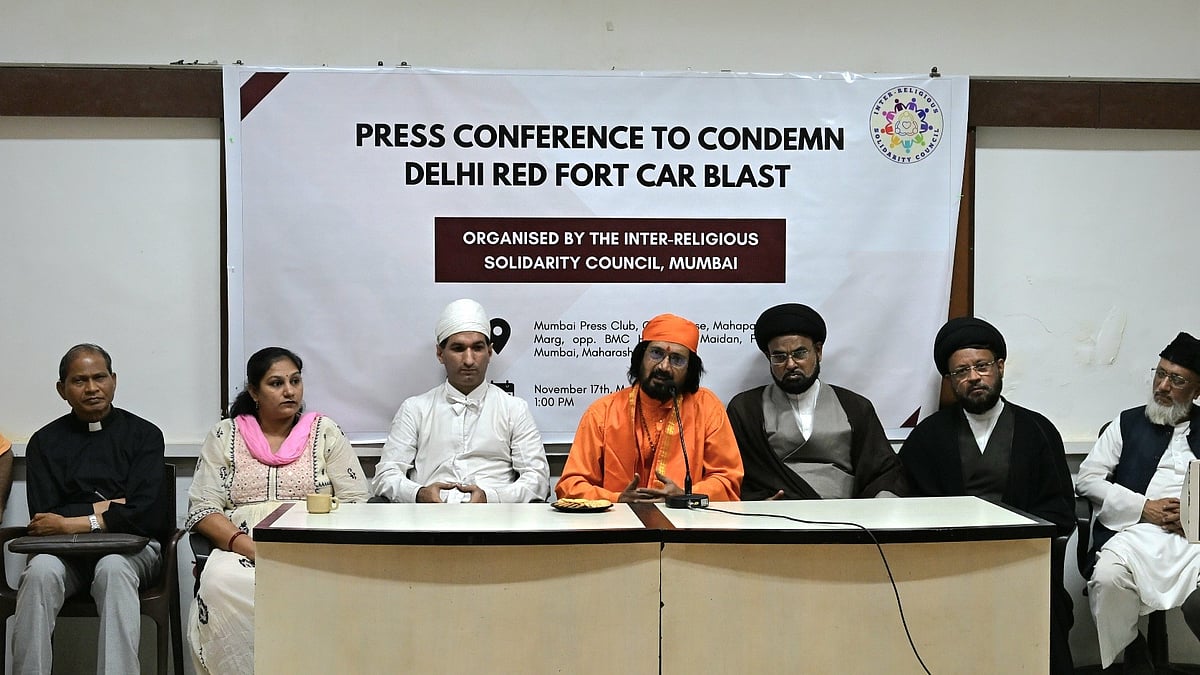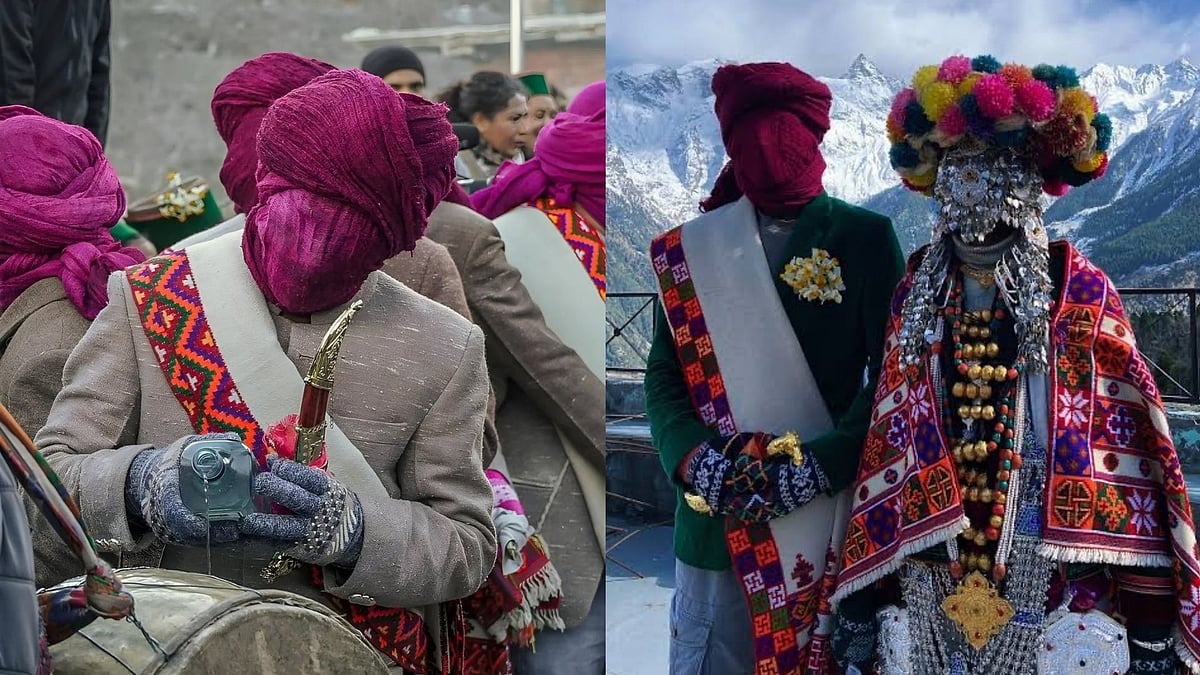Nestled deep in the majestic Himalayas lies the remote Kinnaur district of Himachal Pradesh. Come winter, this region transforms into a breathtaking snow kingdom- serene yet unforgiving. The icy winds slash through the valleys, and a quiet stillness blankets every village. But locals believe this silence is not empty, it is protected.
According to ancient Kinnauri folklore, celestial fairies called Saunis descend from their heavenly abodes when winter tightens its grip. These divine beings watch over the land, the livestock, and the people until sunshine and warmth return. To honour these guardians, the villagers celebrate a mysterious, centuries-old festival known as Raulane.
A festival where men become a divine couple
Raulane stands out as one of Himachal’s most intriguing winter rituals. The event begins with a unique announcement, two men will symbolically “marry”. Of course, it is not a marriage in the real world, but a spiritual union. One man takes on the role of Raula (the groom). The other becomes Raulane (the bride)
Together, they embody the protective spirits, serving as human vessels for the Saunis.
Faces hidden behind warmth and mystery
What makes Raulane truly fascinating is the complete disguise of the participants. Their faces, hands, and bodies are wrapped head-to-toe in traditional Kinnauri woollens, heavy shawls, ornate jewellery, and embellished headpieces. These are not mere costumes, they are armor against the piercing cold and a mask separating the human from the divine.
The transformation blurs identity, allowing the chosen pair to symbolise something far greater- a bridge between earth and the spirit world.
Slow sacred dance at the Nagin Narayan temple
Once robed in their divine attire, the Raula and Raulane are guided slowly to the ancient Nagin Narayan Temple, a spiritual center for Kinnaur’s communities. Locals gather as the duo performs a slow, meditative dance- no jumps, no celebration-style moves.
Instead, every step is prayerful.
Villagers believe this ritual opens an invisible passage between worlds, inviting blessings, protection, and connection with their celestial guardians.
A civilization that refuses to fade
Kinnaur is home to one of the world’s oldest surviving cultures. Its communities have endured generations of harsh climate, isolation, and history’s battles. Yet their traditions remain intact, untouched by modern noise. There are:
-No loudspeakers
-No plastic decor
-No commercial performances for tourists
Everything is handmade, music, woollens, dance, rooted deeply in faith and gratitude.
In an era rushing toward modernity, festivals like Raulane remind us that traditions survive not because they are old, but because they still hold meaning.









